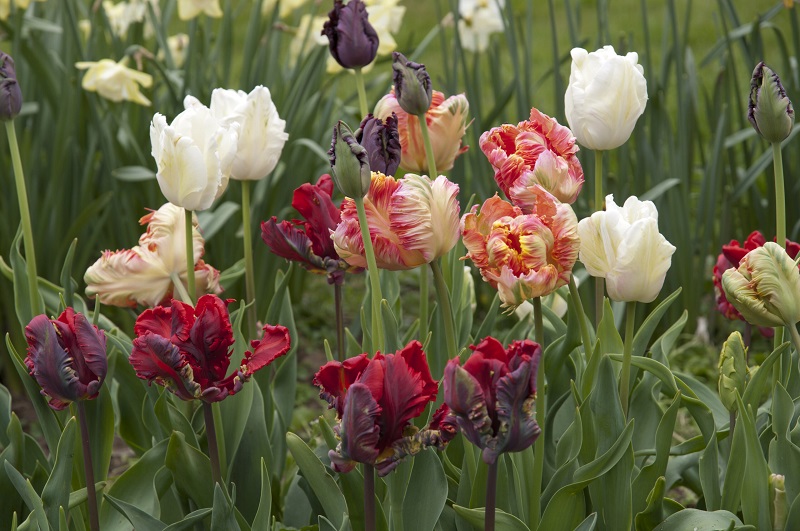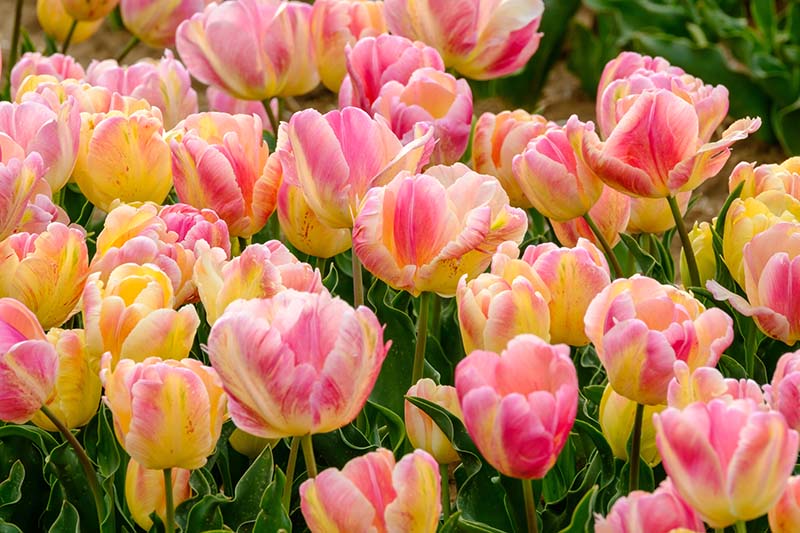The Enchanting World of Parrot Tulips: A Comprehensive Guide
Parrot tulips are among the most visually stunning flowers in the tulip family, celebrated for their striking, feather-like petals and vivid, exotic colors. With their unique appearance and vibrant hues, they capture the imagination of gardeners and flower enthusiasts alike. This article delves into the world of Parrot tulips, exploring their botanical characteristics, cultivation needs, seasonal care, and cultural significance.
Botanical Characteristics
Parrot tulips are renowned for their distinct appearance. Their petals are reminiscent of a parrot’s feathers—fringed, pointed, and sometimes twisted, giving them a dramatic, exotic flair. The flowers typically exhibit a range of bright colors including fiery reds, vivid yellows, and bold oranges. Some varieties display intricate patterns, such as stripes and speckles, which add to their allure.
In terms of growth, Parrot tulips generally reach a height of 12 to 18 inches and bear large, flamboyant blooms that can be up to 6 inches across. The leaves of Parrot tulips are lance-shaped, often with a rich green color that complements the vibrant flowers.

Cultivation and Care
Planting Parrot tulips requires attention to several key factors. They are best planted in the fall, before the first frost, allowing them to establish roots before winter. The bulbs should be placed in well-draining soil at a depth of about 6 to 8 inches, with a spacing of 4 to 6 inches apart to ensure ample room for growth.
Parrot tulips thrive in full sun to partial shade. They prefer cooler temperatures, making them ideal for temperate climates. Watering should be moderate; the soil should be kept moist but not waterlogged. Fertilization is also crucial; a balanced, bulb-specific fertilizer applied in early spring can promote robust flowering.
Common pests that might affect Parrot tulips include aphids and spider mites. Diseases such as Tulip fire and Botrytis can also pose threats. Regular inspection and timely intervention with appropriate treatments can help manage these issues effectively.
Seasonal Care
During the spring, after blooming, it’s important to maintain the health of Parrot tulips by removing spent flowers and allowing the foliage to die back naturally. This process helps the bulbs store energy for the next growing season. In summer and fall, care involves ensuring that the foliage remains healthy until it naturally fades, and preparing the plants for dormancy.
Winter preparation involves mulching around the base of the plants to protect them from extreme cold temperatures. This helps insulate the bulbs and prevent them from freezing.
Uses and Arrangements
Parrot tulips are highly versatile in garden design. Their bold colors and unique shapes make them excellent focal points in flower beds and borders. They also pair well with other spring flowers, such as daffodils and hyacinths, to create a vibrant and varied display.
In floral arrangements, Parrot tulips can be used to create dramatic centerpieces and bouquets. Their sturdy stems and long-lasting blooms make them a popular choice for cut flower arrangements. For those participating in flower shows or festivals, Parrot tulips are often showcased for their beauty and uniqueness.
Varieties and Hybrids
Several popular varieties of Parrot tulips are known for their distinctive characteristics. Cultivars such as ‘Rococo,’ with its fringed petals and rich, red color, and ‘Estella Rijnveld,’ which features a striking mix of red and yellow, are particularly admired. Hybridization has also led to new varieties with enhanced colors and patterns, expanding the range of options available to gardeners.
Economic and Cultural Impact
Parrot tulips hold a significant place in both the market and cultural spheres. Their market value can vary, with prices often reflecting their rarity and demand. Commercial production of these tulips is a thriving industry, especially in regions with favorable growing conditions.
Culturally, Parrot tulips have been associated with beauty and exoticism. They are frequently featured in artistic representations and floral festivals, symbolizing elegance and a touch of the extraordinary.

Troubleshooting
Gardening enthusiasts may encounter issues such as poor flowering or disease in their Parrot tulips. Solutions include adjusting care routines, such as modifying watering practices or improving soil drainage, and seeking professional advice when necessary.
Conclusion
Parrot tulips, with their mesmerizing appearance and vibrant colors, offer a touch of exotic beauty to any garden or floral arrangement. Understanding their botanical needs, seasonal care requirements, and cultural significance can help gardeners make the most of these spectacular flowers. Whether you’re a seasoned gardener or a budding enthusiast, Parrot tulips are sure to bring a burst of color and intrigue to your horticultural endeavors.
